Terms & Conditions for Marketplaces
If you own or operate an online marketplace, it's important that you post a Terms and Conditions agreement on your marketplace website. Your Terms and Conditions is where you'll let marketplace users know about the rules, restrictions, warranty disclaimers and other important aspects to using your website.
Your marketplace users should be required to agree to your Terms before using your site.
What's an Online Marketplace?
An online marketplace (or online e-commerce marketplace) is a type of e-commerce site where various third party sellers and providers can transact in one streamlined place. Amazon is a good example of an online marketplace.
Online marketplaces are growing in popularity. In a period of 12 months, Amazon and Wal-Mart recorded roughly the same percentage in growth of their online marketplaces, declaring $82.7 billion in sales and $12.5 billion, respectively.
A study of online shopper behaviors revealed that 96 percent of Americans are aware that third parties sell products on marketplaces. 85 percent of these shoppers have bought things at an online marketplace, and 35 percent check a marketplace first before other channels.
Why have a T&C for your marketplace?
The rules and guidelines you establish in your Terms and Conditions agreement (also known as Terms of Service or Terms of Use) give you control of your website and protect you from liability. Most Terms and Conditions agreements protect your right to stop any abuse of your website or even close accounts for any users who violate your T&C.
Having a Terms and Conditions (T&C) for your marketplace can help do the following:
- Protect you from liability
- Give you rights to control your website
- Protect your content and intellectual property
- Set forth your payment/refund rules
- Allow you to decide who resolves your disputes
The functions of your T&C is not limited to the list above.
Displaying your T&C on your marketplace website
Most marketplaces have an easy-to-locate link to their T&C, usually in the website footer.
Here's an example from Ebay:

You can also add links to your "Legal" or "About" pages or menus. This is a good option for mobile apps that don't have footers.
Getting Users to Agree to Your T&C
Most sites use either the clickwrap method or browsewrap method to get users to agree to their T&C's.
With Clickwrap, users must actively click an "I Agree" (or equivalent) box or button before they can use your site. This is a way of showing clear and undoubted user agreement.
Here's how WeTransfer does this:

With Browsewrap, agreement links are displayed in a footer or similarly. However, they don't require an active acceptance from the user as in the example above. Browsewrap assumes user's acceptance or opt in is assumed by virtue of their using your site. A paragraph somewhere in the legal agreement will say something along the lines of, "By using this website, you're agreeing to be bound by our Terms."
Here's an example of a classic Browsewrap clause in a T&C:

Clickwrap is the preferred method for getting consent and agreement.
Key Components of T&C for Marketplaces
Below are a few common clauses you should add to your marketplace T&C agreement.
Dispute Resolution
You might choose to use dispute resolution instead of allowing lawsuits. This method is faster than a lawsuit, gives both parties a fair hearing and the satisfaction rate is usually high.
Include a Dispute Resolution clause in your T&C if you choose to go this route to resolve legal issues.
Here's how eBay does it:
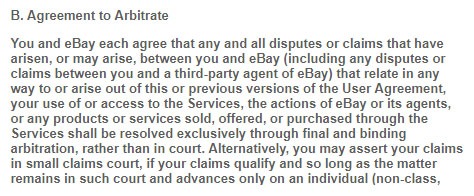
Fees you Collect
Because you're operating as almost a middleman of sorts with your marketplace, you're likely collecting fees from at least the sellers. It's wise to include a clause that discloses this and details the fees so that your users won't be surprised or upset and try to dispute any fees when you attempt to collect them.
Copyright Infringement
Here's how Amazon addresses this:

Amazon allows users to submit claims both through an online form and in writing. They link the form to this clause within their Conditions of Use, as well as provide all the details you'll need to include if you're going the old-fashioned pen and paper way.
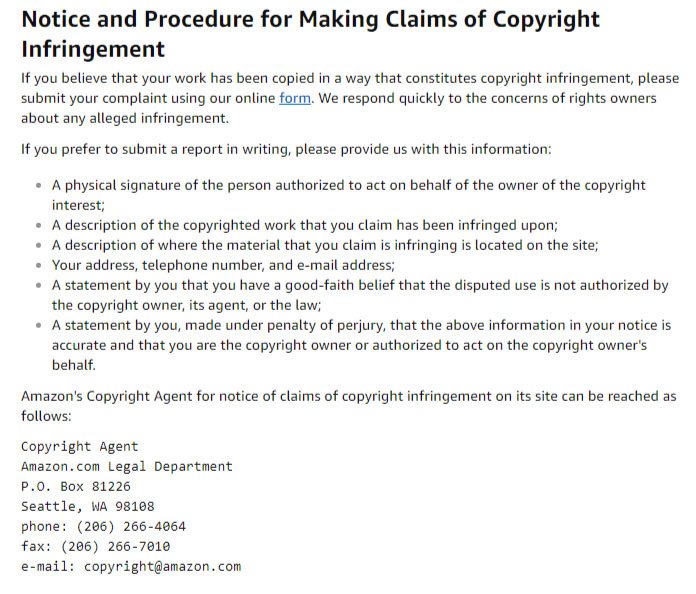
Disclaimer of Warranties/Limitation of Liability
Here's an example from Amazon:
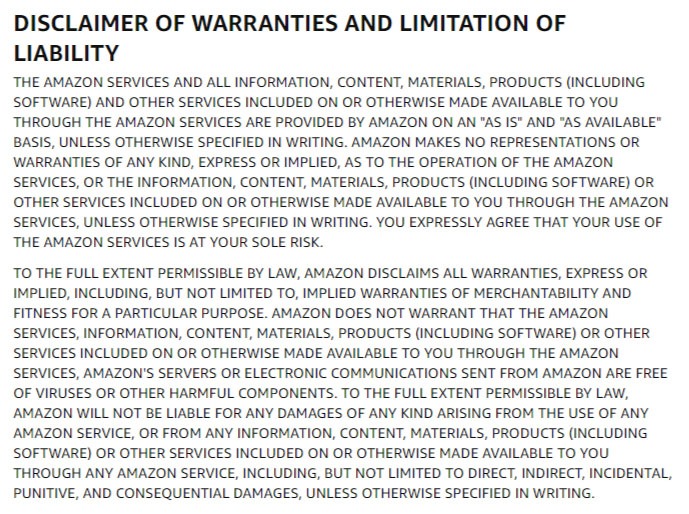
Termination
One of the key methods you have to protect your marketplace is to be able to block access to abusive users. Because of this, you should always include a Termination clause in your T&C.
Here's a clause from Amazon that reserves Amazon's right to refuse service, terminate accounts and cancel orders at its sole discretion:
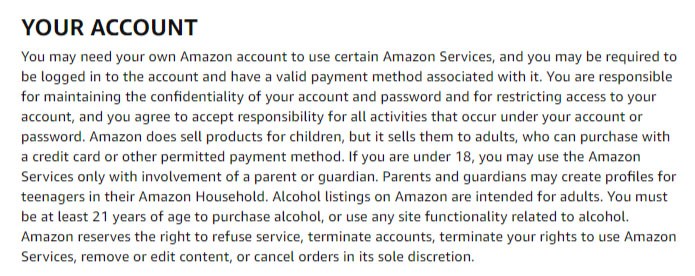
You can also let users know how to go about terminating their own accounts and what happens upon termination by either party.
Here's an example from Upwork's user Agreement:
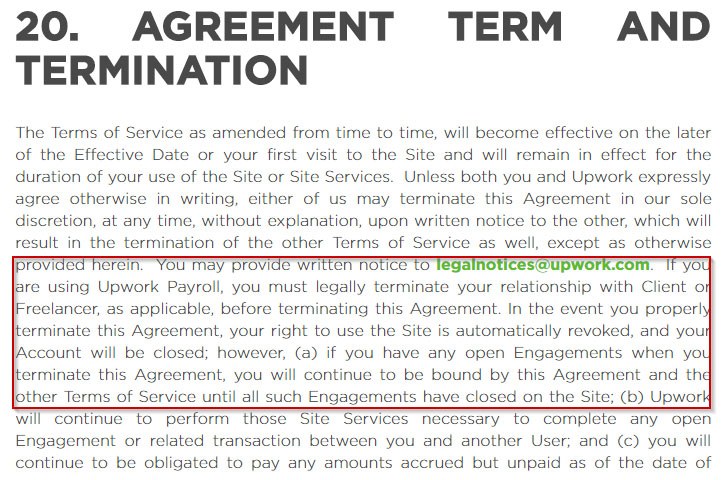
State Your Position as a Third Party
In a marketplace, users interact with each other over a platform you have provided. As the owner of a marketplace site, you are, therefore, a third party. A Third Party clause will spell this out, thus, protecting your rights and limiting your liabilities in any disputes between your users.
Upwork does this well:
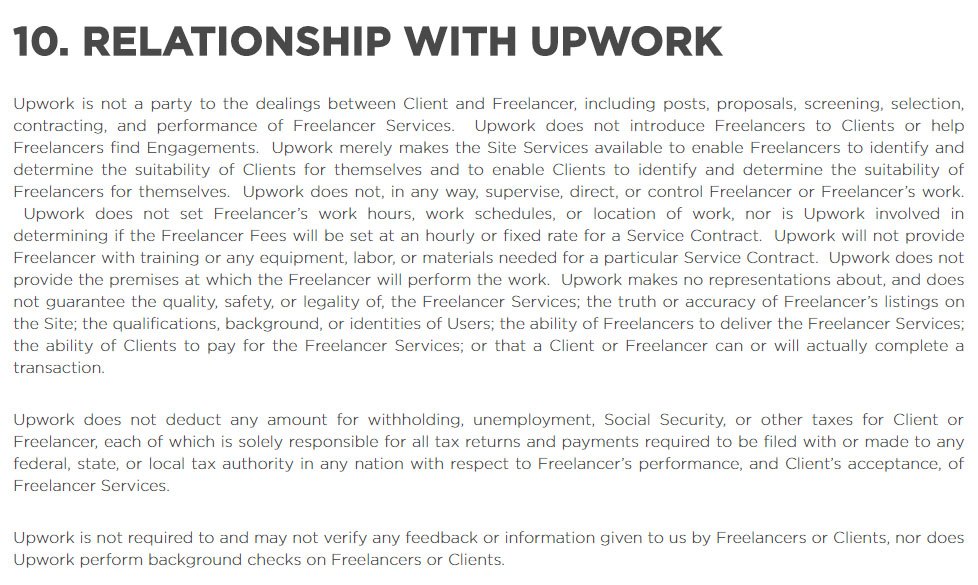
Thoroughly assessing the unique nature of your marketplace will help you create a solid T&C agreement that protects you and limits your liability while also ensuring your marketplace is a pleasant place to do business.